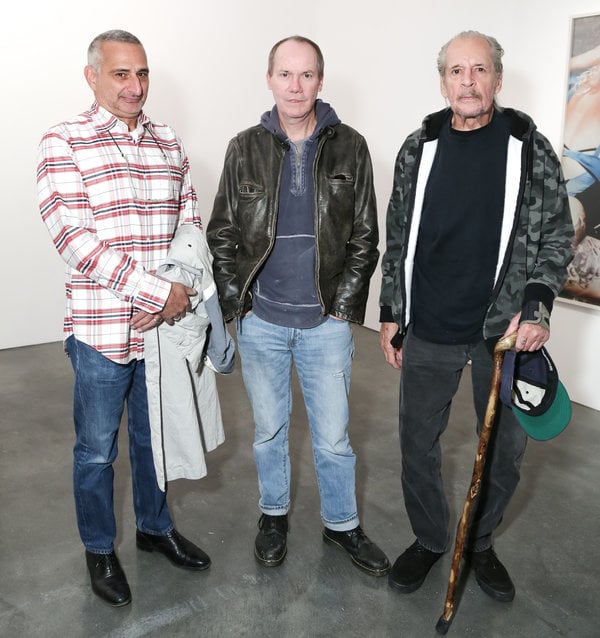Art World
Is Cady Noland More Difficult to Work With Than Richard Prince?
Her work at the Brant Foundation comes with a disclaimer.

Her work at the Brant Foundation comes with a disclaimer.

Cait Munro

Over the weekend, artnet News reporters attended the opening of “Deliverance!”, a group show featuring works by Richard Prince, Larry Clark, Christopher Wool, and Cady Noland at the Brant Art Study Center in Greenwich, Connecticut.
The afternoon was predictably plush, with a horde of famous faces from Chloe Sevigny to Larry Gagosian mingling on the sprawling property. Camera flashes abound, with shutterbugs attempting to capture every aspect of the glamorous gathering. Except even a glimpse of Noland’s work.
We overheard paid photographers being informed that the work was not to be shot, even in the background of a picture of guests. Any images where Noland’s pieces were accidentally visible were not to be posted online. Why? Because the famously reclusive artist refused to endorse the show.
Brant owns the works, so there’s legally not much she can do, but the show nevertheless features a plaque that reads:
“Because Ms. Noland have [has] not been involved with the chain of provenance with many of my [her] pieces there are more situations like this show which place demands on her time and the artist’s attention to ensure proper presentation of her artwork (including its representation in photographs), than she has time or capacity to be involved with. She reserves her attention for projects of her own choosing and declined to be involved in this exhibition. The artist, or C.N., hasn’t given her approval or blessing to this show.”
This isn’t the first time Noland has been at odds those interested in her and her artwork. In 2012, she was famously sued by Swiss art dealer Marc Jancou for disowning Cowboys Milking, an artwork he consigned to Sotheby’s, thereby forcing the auction house to yank it from their sale. She’s had fall-outs with gallerists and patrons, and turned down a curator at the Museum of Modern Art when they expressed interest in mounting a retrospective.
In her new book, “33 Artists in 3 Acts,” bestselling author Sarah Thornton details her meetings with Noland, who, as the book notes, “would like it to be known that she has not approved” the chapter on her. Despite her refusal to approve the final product, it is the first interview Noland has granted in 24 years.
Thornton writes, “Noland laments the way auction houses ‘throw artworks together pell-mell…it’s terrible when the element of chance is introduced,’ she explains. ‘An auction is like throwing up the dice. It’s like cutting up a writer’s words and throwing them up in the air. If I had known everything would be flipping at auction, I would have made works that were impervious. I know it sounds crazy, but…’ she stops talking when a woman in dark glasses sits down at a neighboring table. Noland’s vibe is so intense that the woman gets up and moves further away.”
Noland “finds it distressing when her sculptures are incorrectly installed and combined with works that engender the wrong kind of dialogue,” writes Thornton. The artist also claims that many of her pieces are missing parts and that she believes all of this tends to happen when commission-hungry dealers eagerly “yank works out of happy homes.”
It’s an interesting predicament, given that Noland is one of the top 10 most expensive female living artists, with her 1989 sculpture Oozewald holding the record for the highest price ever paid for an artwork by a female living artist at $6.6 million. In a way, her refusal to cooperate with the people who want to buy, sell, and display her work is the ultimate biting of the hand that feeds. Considering the current state of the art world, in which artists often complain of feeling like part of a meat market buffet, it’s a fascinating, if somewhat misguided, act of rebellion.
But mainly, it’s sad. Noland, an extremely talented artist, has become so obsessed with her old work that she’s been unable to create anything new in years. She admits to Thornton that “I’d like to get into a studio and start making work,” but that tracking the old work has become a “full-time thing.”